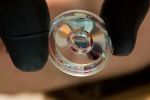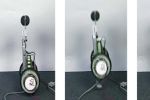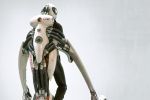Nissan is going to manufacture the Leaf in the thousands (maybe the hundreds of thousands). We took the first publicly drivable model for a spin
The Nissan Leaf: Seth Fletcher
Even as hype and excitement has built around what seems like a 21st century green-car revolution, pure electric cars—as in, totally zero-emission vehicles with no gas engine, no tailpipe—have been very, very far from going mainstream. And the impressive but small-batch class of current contenders won’t change that.
Keep this in mind when you consider what Nissan unveiled Sunday morning at the opening ceremony for its new headquarters in Yokohama, Japan. The Leaf--a cute, slightly odd hatchback--looks poised to become the first truly mass-market electric car.
[
Read Full Story ]









